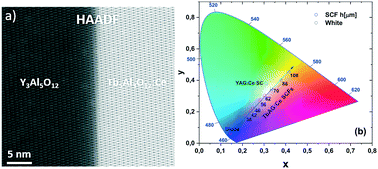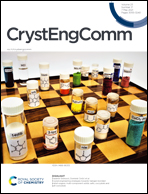LPE growth of Tb3Al5O12:Ce single crystalline film converters for WLED application
Abstract
The possibility of development of an efficient phosphor converters (PC) for white LED (WLED) based on single crystalline films (SCF) of Ce3+ doped Tb3Al5O12 garnet (TbAG:Ce), grown using liquid-phase epitaxy method onto Y3Al5O12 (YAG) substrates, is evidenced for the first time in this work. The detail investigation of the structural properties of the TbAG:Ce SCF/YAG epitaxial structures was performed. High-resolution scanning transmission electron microscopy and composition analysis revealed an interface with high structural quality including the formation of a transition layer with a 5–7 nm thickness between TAG:Ce SCF and YAG substrate. The transition layer consisted of solid solutions between Tb3Al5O12:Ce and Y3Al5O12 garnets gradually changing from undoped YAG in substrate towards TbAG:Ce in the film and allowed to reduce the mismatch-stress. The absorption, cathodoluminescence, photoluminescence properties of TbAG:Ce SCFs were investigated as well. Furthermore, the dependence of photoconversion properties on the film thicknesses was studied to construct the prototype of efficient warm white LEDs. The change in the crystal thickness enabled tuning of the white light tons from cold white/daylight to neutral white. These results can be useful for the development of a novel generation of phosphor converters for white LEDs.

- This article is part of the themed collection: Crystal Engineering Techniques


 Please wait while we load your content...
Please wait while we load your content...